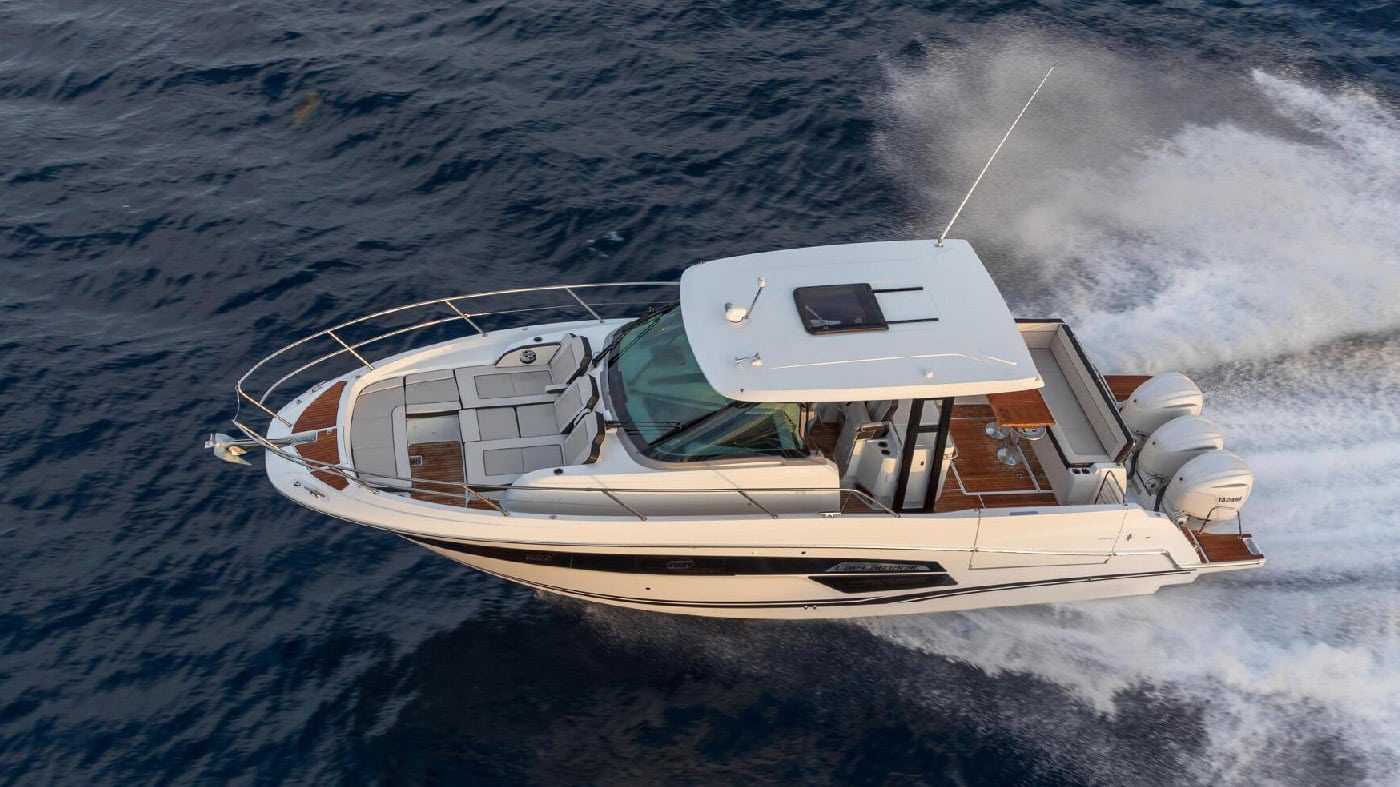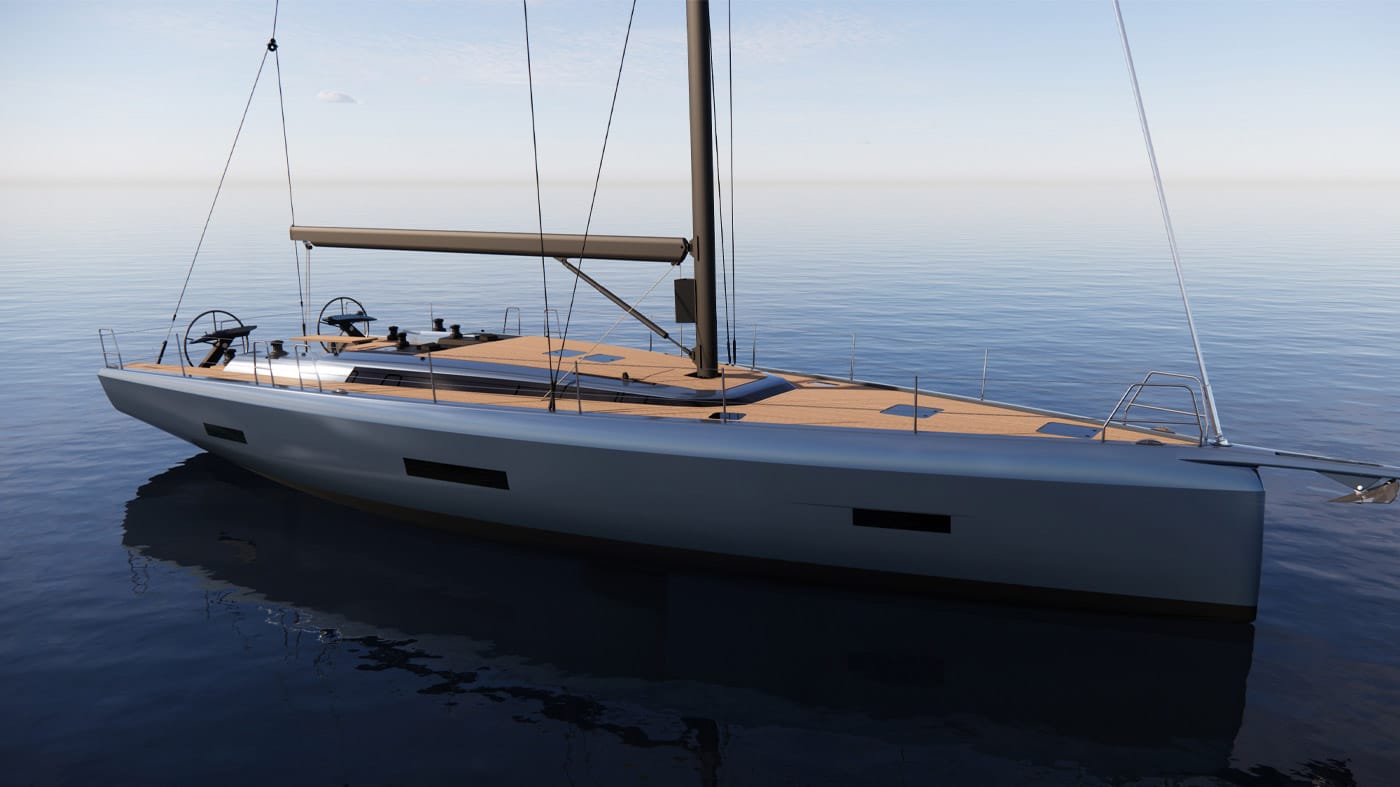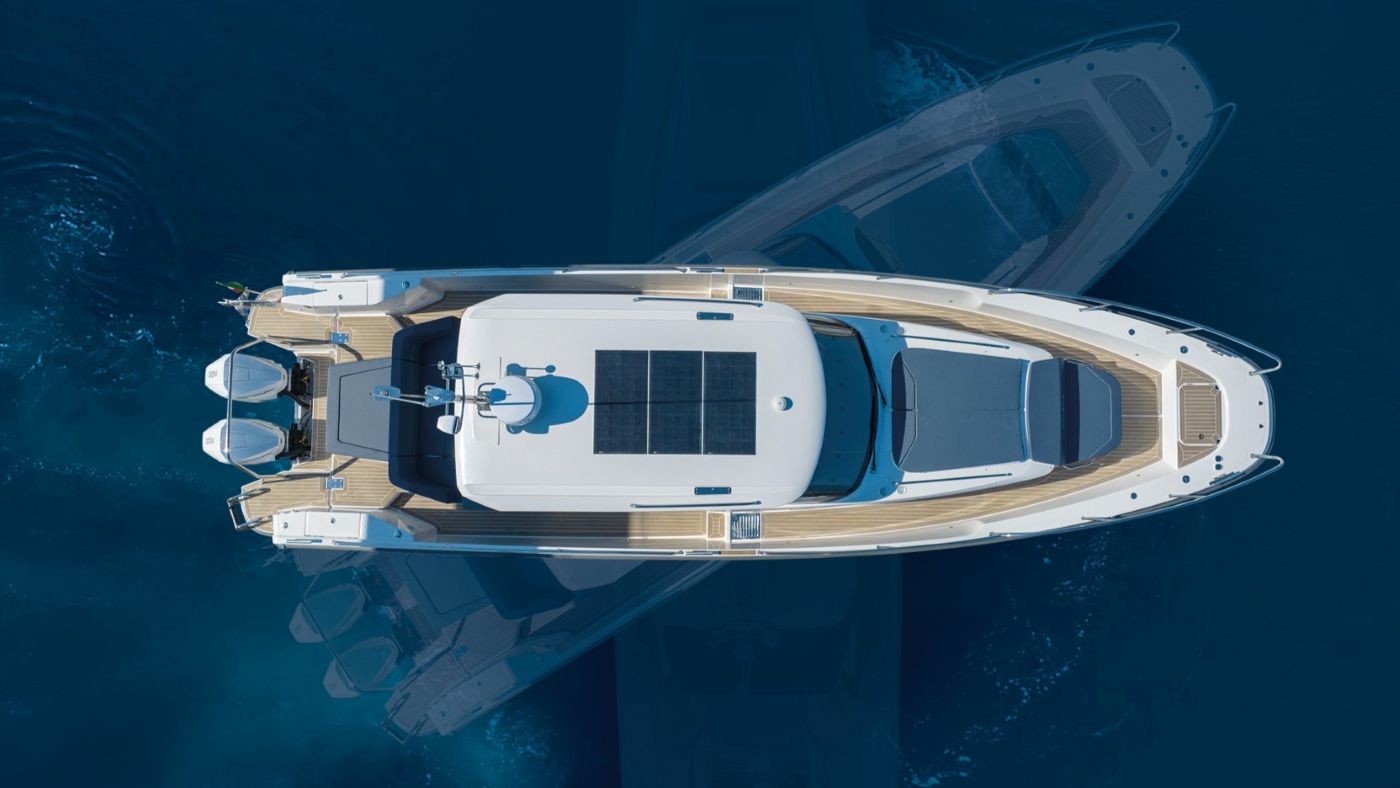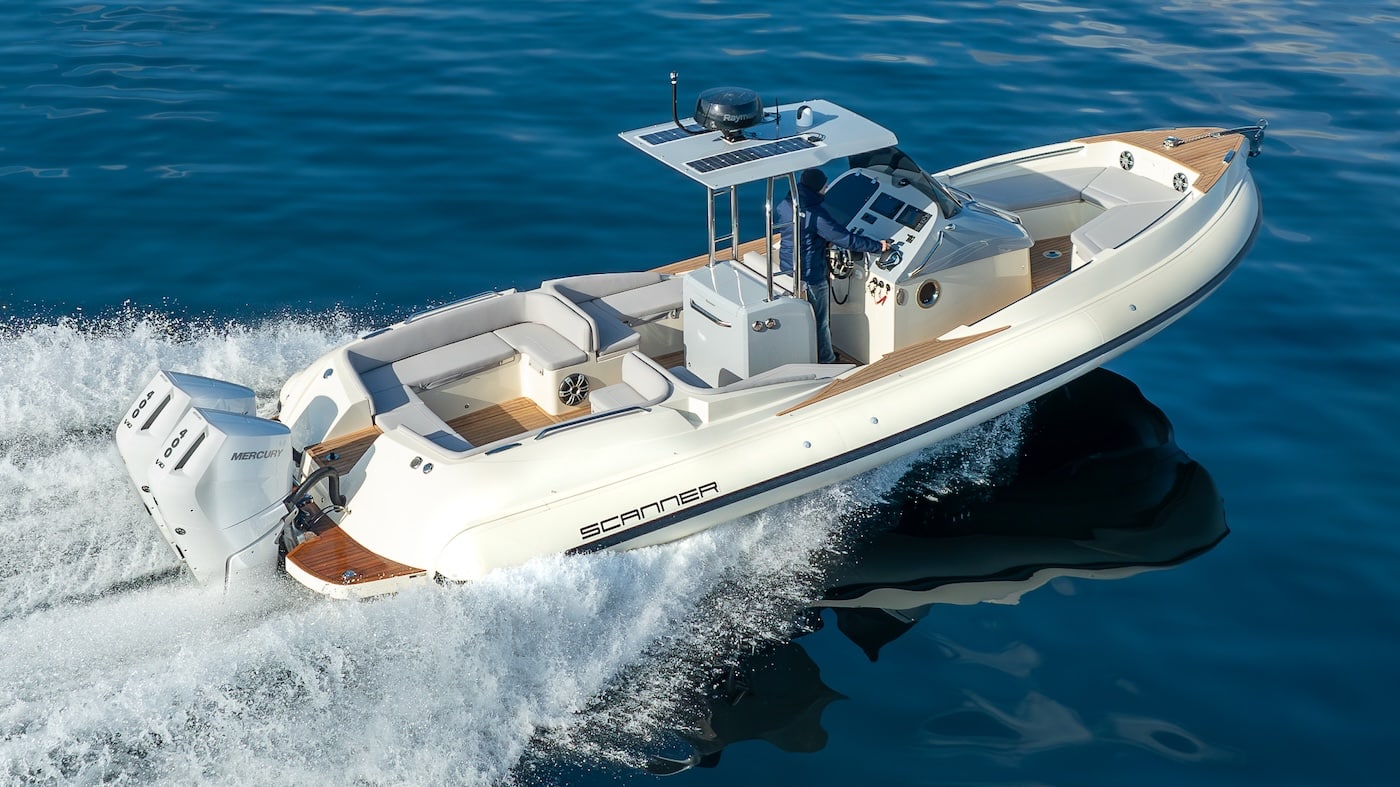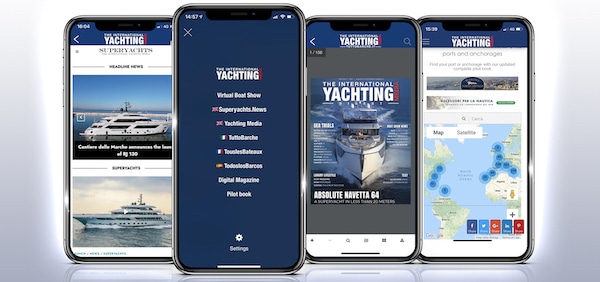The year 2022 celebrated the first 150 years of the Pirelli Group, which was founded in Milan in 1872 by engineer Giovanni Battista Pirelli, who opened the first factory in Italy for the processing of rubber products.
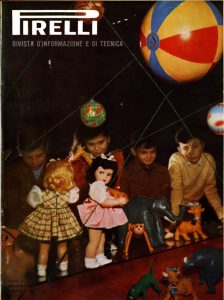
In the early years of the 20th century, the Pirelli Group was already an industrial benchmark specializing in three rubber processing and manufacturing sectors: the electrical cable manufacturing sector, the two- and four-wheeler vehicle tyre sector and the diversified products sector.
Precisely in the sector of diversified products, the Milan-based Group was constantly engaged in the research of innovative synthetic plastic materials in addition to rubber, for the production of products aimed at the general public of consumers, influencing their habits over time. The Pirelli Group therefore understood the importance of dedicating resources and energy to industrial design and decided to collaborate with important graphic artists and designers, contributing to writing the history of Italian design through innovative and iconic items and modern advertising campaigns.
At the very first edition of the Golden Compass in 1954, a prestigious award for industrial design, Pirelli won the coveted prize with the “Zizì foam rubber monkey” designed by Bruno Munari and manufactured by Pigomma, a subsidiary of the Milan-based Group.
The product was awarded for its “formal essentiality” and for the use of foam rubber articulated by a wire framework that allowed “the enjoyment of an infinity of attitudes”. This was a significant example of how foam rubber, an innovative material developed by Pirelli for padding mattresses and armchairs, could find a different application through a design study, becoming a successful soft toy.
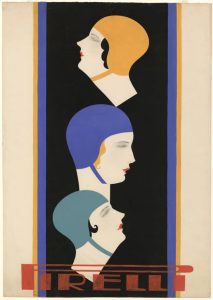
“CIFRA 5” was the electromechanical watch which revolutionized the way of “reading the time” by replacing the classic hands on a dial with numerals printed on rectangular pallets. Designed by architect Gino Valle for the Solari company, which soon became a Pirelli subsidiary, the “CIFRA 5” watch won the Golden Compass Award in 1956.
It was followed in 1966 by the smaller ‘CIFRA 3’, which became part of the permanent collection of the MoMa in New York in 1968. The technological concept behind these innovative electromechanical digit clocks would lead to the development of alphanumeric teleindicators, creating information boards for travellers in airports and stations all over the world.
In 1959 Pirelli entrusted architect Roberto Menghi with the design for a basket with a shape that distributed the weight of the liquid contained in such a way as to achieve maximum balance with respect to the handle, ensuring manageability and ease of transport, using a special polyethylene compound that was resistant to petroleum and its derivatives. The special feature of the product was in the design of the basket bottom: a hollow designed over the shape of the spout and the handle, which allowed the containers to be stacked one on top of the other, optimizing storage. The result of this design, which combined functionality with aesthetics, allowed Roberto Menghi’s basket to receive several awards, including the Packaging Oscar at the 1959 Padua Trade Fair and the display at the Packaging Exhibition organized by the MoMa in New York.
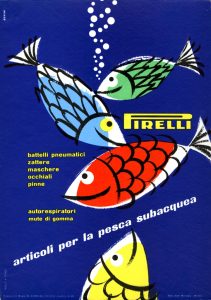
In 1962 some rubber marine products made by the Seregno Company, a Pirelli subsidiary, were also exhibited at the MoMa in New York, including the PIRELLI diving mask, the same one also mentioned in the famous chapter of Ian Fleming’s 007 saga “Octopussy”.
In 1964, the Golden Compass jury awarded the project for Milan’s first underground line, the ‘red line’ with its 21 stations from Sesto Marelli to Lotto. The Pirelli Group also contributed to the achievement of this important project for the city of Milan, supplying not only technical components for the trains and systems, but also the rubber paving system with a raised bubble surface, a material and design developed in collaboration with architects Franco Albini and Bob Noorda, who particularly designed the signage.
In 2012, the exhibition “Rubber Soul. Aesthetics & Technique in Step with Fashion”, organized by the Pirelli Foundation, was included in the ADI Design Index. The exhibition, set up at the Triennale di Milano in 2011, was dedicated to the history of fashion at Pirelli, from the first rubber mackintoshes to the design project “P ZERO” for clothing in the 2000s. Among the advertising campaigns shown in the exhibition was the 1953 campaign for Coria soles by Bruno Munari, also exhibited at the MoMa in New York. In 2013, ‘Rubber Soul’ also won the Red Dot Design Award, the world’s most important design award.
In 2018, the editorial project “Pirelli advertising with a capital P” by Corraini Edizioni and Pirelli Foundation was selected by the ADI Design Index 2018/2019 to compete for the Golden Compass Award 2020. The book highlighted Pirelli’s commitment to advertising communication, from the Pirelli Group’s Centro agency to global campaigns with testimonials from the worlds of cinema and sport, created by major international agencies. Without mentioning the image of Carl Lewis in stiletto heels (photograph taken by Annie Leibovitz in 1994) with the headline << POWER IS NOTHING WITHOUT CONTROL >>, a slogan still distinctive of Pirelli today.
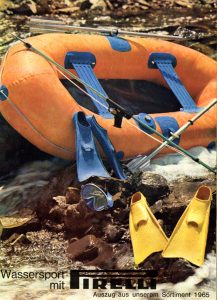
The Pirelli Group’s commitment to the constant study of the application of rubberized fabric led the ‘long P’ company to embrace the boating sector in the early 1950s, producing inflatable boats destined to become an icon of Italians’ seaside holidays. The NAUTILUS was the ancestor of the historic orange-coloured boat with blue trim and attention to detail, such as the inflation bellows integrated in the inner tube. The ‘JO’, an original dismountable inflatable boat with outboard propulsion, could be transformed into a sailboat once the mast and stabilizers installed: an example of a design study that combines form and aesthetics with functionality. The design did not stop at the creation of ‘inflatable boats’ that could sail reliably, but also at the ease of disassembly and the practicality of stowing them in special transport bags. From the 1960s onwards, Pirelli played a leading role with the LAROS series in the technological development of inflatable boats, from the design of shapes for aesthetics and performance while underway, to the study of increasingly sophisticated and resistant rubberised materials and fabrics for this type of application.
The new millennium saw the beginning of the collaboration between Pirelli and the Italian shipyard Tecnorib (today Sacs Tecnorib). The aim was to develop a modern marine project that combined technology and aesthetics. The result of the project were the PIRELLI-branded RIBs (Rigid Inflatable Boats) made under licence by Sacs Tecnorib .
An attractive look with very personal features unites the range of these semi-rigid boats, in addition to the sporty character resulting from the high-performance hulls, whose water lines are designed by the Swedish OMD Ocke Mannerfelt Design, a leader in the design of sports boats with numerous world titles under their belt. Notwithstanding the sporty DNA, the fittings are studied through custom design solutions to guarantee maximum comfort and relaxation aboard, dedicating maximum attention to the quality of the materials and details. The range includes units from 8 to 19 metres with both open and cabin versions, all united by an iconic stylistic element, namely the rubberized insert on the tubulars with the tread pattern of the CINTURATO Blue Full Wet, the wet weather tyre used in the top motor racing where Pirelli is present as sole supplier, in addition to the clearly visible logo of the “long P” on the aft sections.
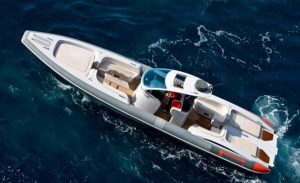
In 2009 the PIRELLI P ZERO 1400 Sport won the Red Dot Design Award, a prestigious recognition for design worldwide. Produced and sold by the Italian shipyard TecnoRib, again in collaboration with the OMD Ocke Mannerfelt design studio, this 14 metre long maxi Rib with a beam of 3.64 metres is an open that embodies the distinctive stylistic concepts of the PIRELLI range. It features large open-air spaces that can be customized in terms of both materials and colour combinations. Also distinctive of the range is the design of the centre console, which is connected to the windscreen integrated into the hard-top structure with semi-arched lines. The fibreglass colours of the superstructure and hull can be customized as well as the rubberized fabric of the tubulars.
In 2022, PIRELLI 35 won the Red Dot Design Award. Produced by TecnoRib and designed with the collaboration of the Ocke Mannerfelt Design team, the PIRELLI 35 follows in the wake of the success of the larger PIRELLI 42 in the new Walkaround range, from which it takes the technical concepts of the design and styling lines. Measuring 11 metres in length and with a beam of 3.8 metres, the PIRELLI 35 is a blend of design and technology, capable of tackling the sea in safety while maintaining high standards of habitability and comfort in its elegant on-board spaces.
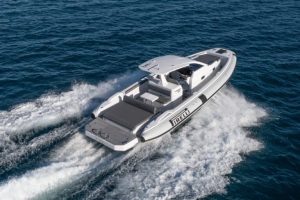
The walkaround layout provided a cozy cabin for spending time on board after dark, without compromising en plein air spaces and maintaining well-balanced superstructure volumes. The aft living area with its sundeck and convivial area is spacious and versatile. The cockpit inherits the range’s ergonomic studies with a helm station that conveys adrenalin-fuelled emotions. Even the structure of the hard-top with integrated windscreen echoes the distinctive stylistic features of the PIRELLI-branded fleet with semi-arched lines. The side-decks allow safe circulation around the side perimeter of the boat, thanks to the high bulwarks and stainless steel handrails integrated into the bulwark: another significant stylish detail. The tubulars and the bowplate of the PIRELLI 35, too, feature the iiconic rubber linings with the CINTURATO Blue Full Wet tread pattern, a tribute to the expertise gained by the company in the field of motorsport and “extreme wet” tyres.
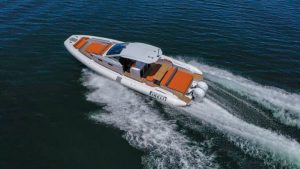
To celebrate the prestigious Red Dot Design Award, a PIRELLI 35 in the Speedster all black look without hard-top and with leather-coloured cushions was exhibited at the Salone del Mobile in Rho Fiera during the Milan Design Week 2022.
Testifying to the commitment to a constant search for excellence, the PIRELLI 42 “Mini Rocket One” was selected as a finalist in the “Tender of the Year” category of the Design & Innovation Awards 2023 organized by the prestigious magazine Boat International. A 13-metre walkaround, the PIRELLI 42 combines an aggressive look with refined details and is ideal both as a tender and as a day cruiser. This model, highly customisable thanks to a wide range of colour and material options, is capable of offering relaxation on board in total safety and comfort.
Special thanks to the Pirelli Foundation who kindly granted the photos from the historical archive for the writing of this article. You can view the Foundation’s website at this address https://www.fondazionepirelli.org




















